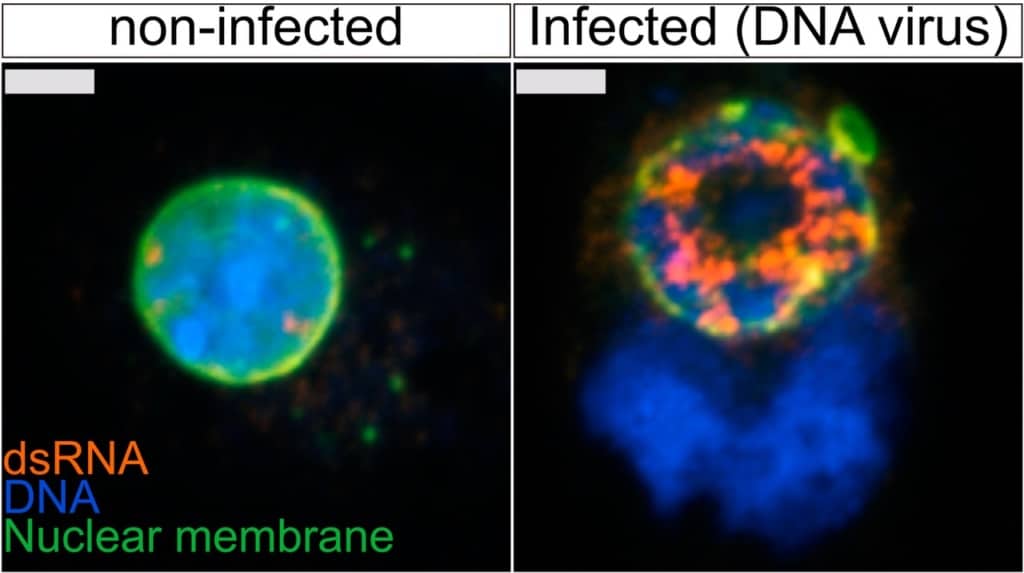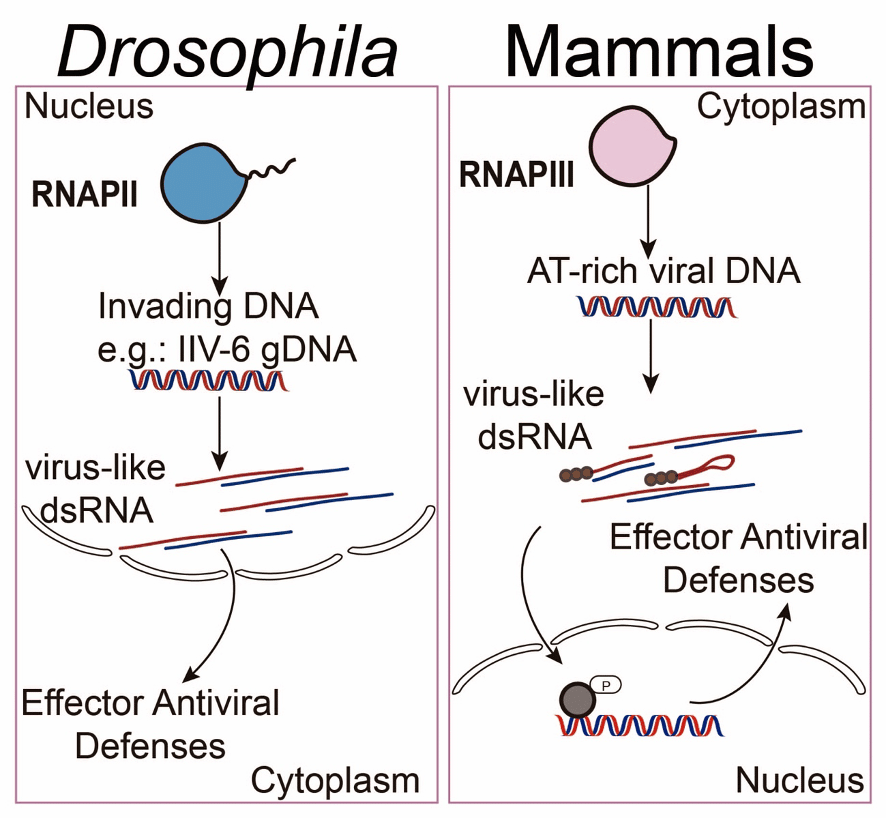
A new publication (https://doi.org/10.1016/j.celrep.2022.110976) in Cell Reports provides new insights into how DNA viruses are recognized by the innate immune system in insects..
Viruses are obligatory intracellular parasites that hijack the host cell machinery. Host cells need to rapidly recognize the infection and initiate effector antiviral defenses to prevent viral replication. Double stranded RNA (dsRNA) is a hallmark of viral infections and a potent activator of antiviral defenses in eukaryotic cells. During RNA virus infections dsRNA is generated as a byproduct of genome replication but, in the case of DNA viruses, its origins are less clear. In a study published in Cell Reports, the researchers describe a defense mechanism in which the host cell converts invading viral DNA into dsRNA in order to mount an antiviral response in the model organism Drosophila melanogaster
 Intranet
Intranet Access
Access Contact
Contact